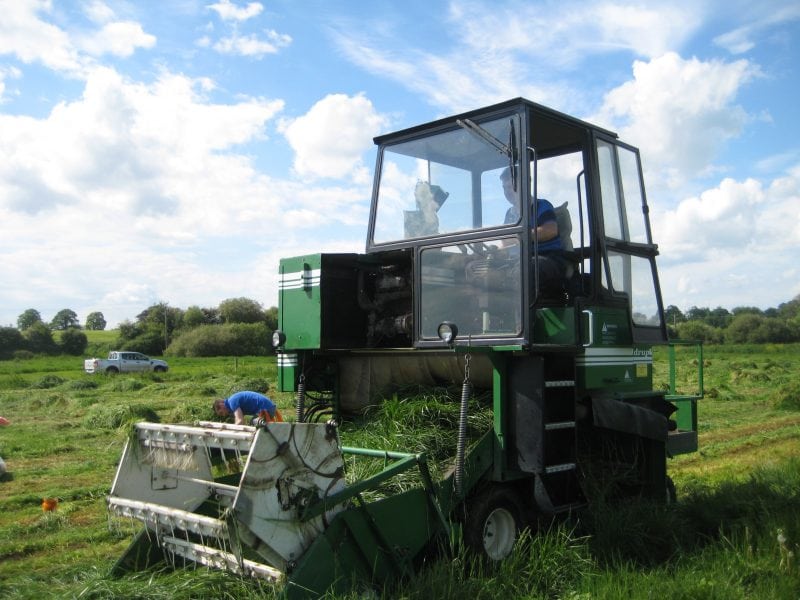
More food is required for a rapidly-growing global population. At the same time, efforts to mitigate the effects of climate change have meant that fossil fuels are being replaced by renewable energies including bioenergy.
Biological energy (bio-energy) was the first type of energy used by mankind, and it is estimated that a substantial proportion of global primary energy could be produced from biomass by the middle of this century. However, the conversion of large areas of good land to bioenergy production has distorted food and land prices and led to a fuel vs food debate. It is anticipated that such competition for land will increase as demands for both food and fuel continue to increase. Furthermore, the conversion of land from one use to another has raised environmental concerns.
It has been suggested that that abandoned or little-used agricultural land could be used for bioenergy production, leaving better land for food production. Various terms have been used to describe such land areas, one of the most common terms is that of “marginal land.” Fast-growing energy crops, which are more tolerant of stressful conditions on marginal land compared to conventional crops, have been suggested as good candidate species for the production of biomass on marginal land. However, there are concerns that the cultivation of energy crops on marginal land may lead to losses in soil carbon and biodiversity. A more favorable option may be to use the biomass already growing on marginal land for energy production.
Ireland is heavily dependent on imported fossil fuels. Electricity generated by wind has increased significantly in recent years, but energy use in Ireland is divided between electricity, heat, and transport fuel usage. Fossil fuel usage in all three areas needs to be replaced by renewable technologies. Bioenergy, uniquely among renewable technologies, can supply all three types of energy, but can sufficient biomass be grown in Ireland without compromising food production?
We wanted to quantify how much energy could be produced from biomass grown on marginal land in Ireland without growing new crops on the marginal land (ie no land use change). Grass is grown on over 90% of agricultural land in Ireland, including marginal land. We decided to model the use of grass as a feedstock for anaerobic digesters producing biomethane for the national vehicle fleet. In Ireland, marginal land is generally wet land, but we only considered a category of marginal land described as “lowland, wet mineral soils” excluding peatlands and marginal lands located on hills and mountains.
Before we started our modeling exercise, we needed to know something about the yields of grass which could be expected from marginal land. It is generally expected that yields from marginal land will be lower than from better land, but how much lower? Does growing crops on marginal land always mean that lower yields can be expected? To find out, we set up grass trials on a control (good land) site as well as on three marginal land sites (very wet site, site prone to flooding, and site prone to drought) and measured grass yields from these sites over a number of years.
The result which we got was a surprise. Two of the marginal land sites (the site prone to flooding and the site prone to drought) produced yields which were equal to the control site. The only marginal land site with lower yields than the control site was the very wet site, where yields were 85% of the yields on the control site. Consequently, we found that yields from marginal land are not always lower than on better land.
Marginal land in Ireland tends to be land which is wet, either due to flooding or due to poor drainage. For our modeling exercise, we used average yields from the wet sites in our study. When we did our calculations, we found that the grass produced from the marginal land areas which we considered and fed into anaerobic digestors resulted in the production of enough biomethane to power both the entire private car fleet in the country together with the heavy goods vehicle fleet.
The category of marginal land which we considered is currently underutilized, but our research showed that this land area could be used to supply a large proportion of the energy needs of the country, avoiding the importation of fossil fuels and reducing emissions of greenhouse gases. The crop grown for energy use on such lands (grass) can also be used for food production allowing the end use of the crop to be seamlessly switched from energy to food production and vice versa. In a market economy, economic and social factors will typically decide the proportion of marginal land used for energy production, but this exercise has shown the potential which exists to produce energy from marginal land without compromising food production from better land.
These findings are described in the article entitled Exploring the potential of grass feedstock from marginal land in Ireland: Does marginal mean lower yield? recently published in the journal Biomass and Bioenergy. This work was conducted by Peter Meehan, Brendan Burke, Deirdre Doyle, Susanne Barth, and John Finnan from Teagasc.









